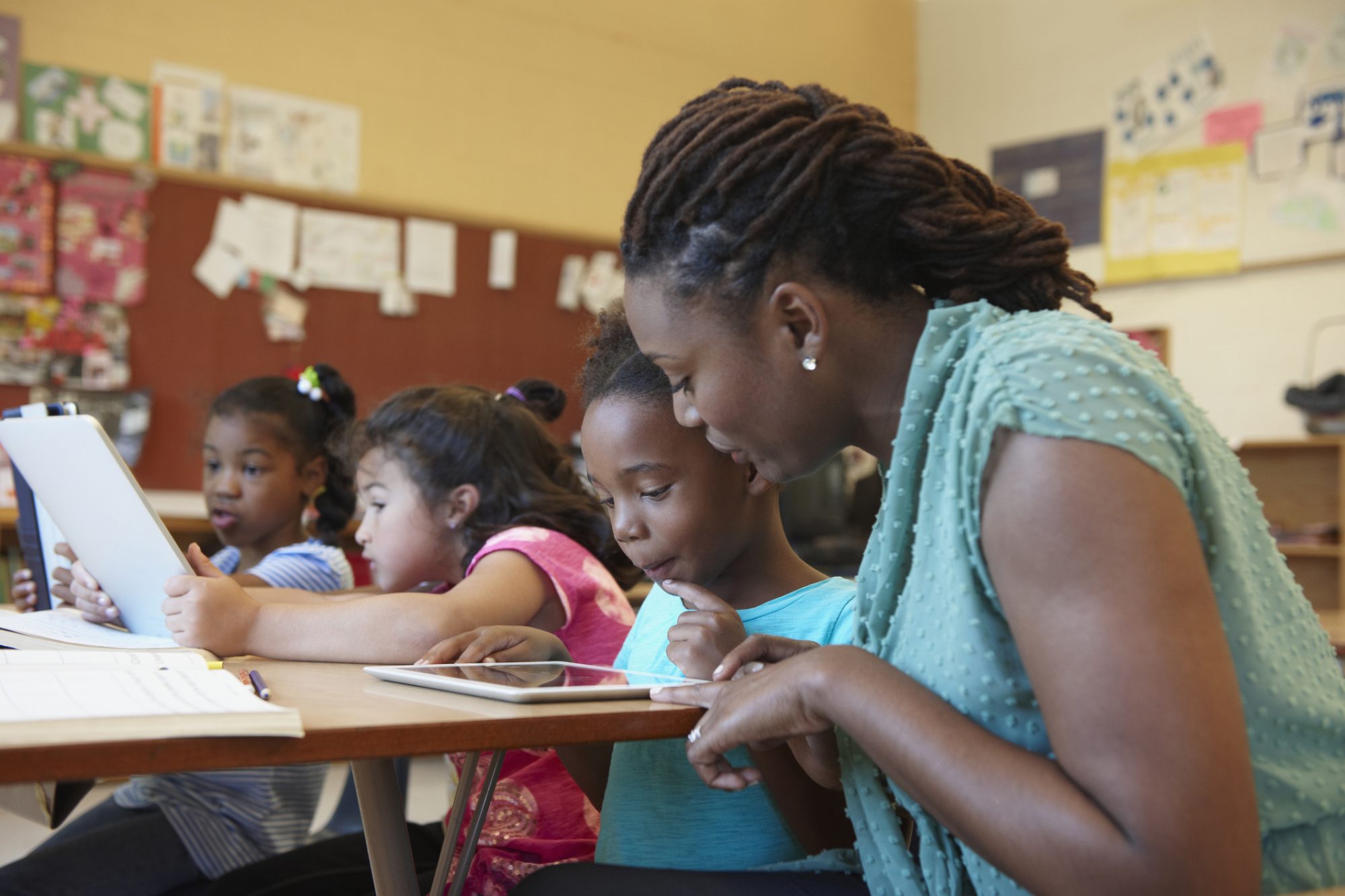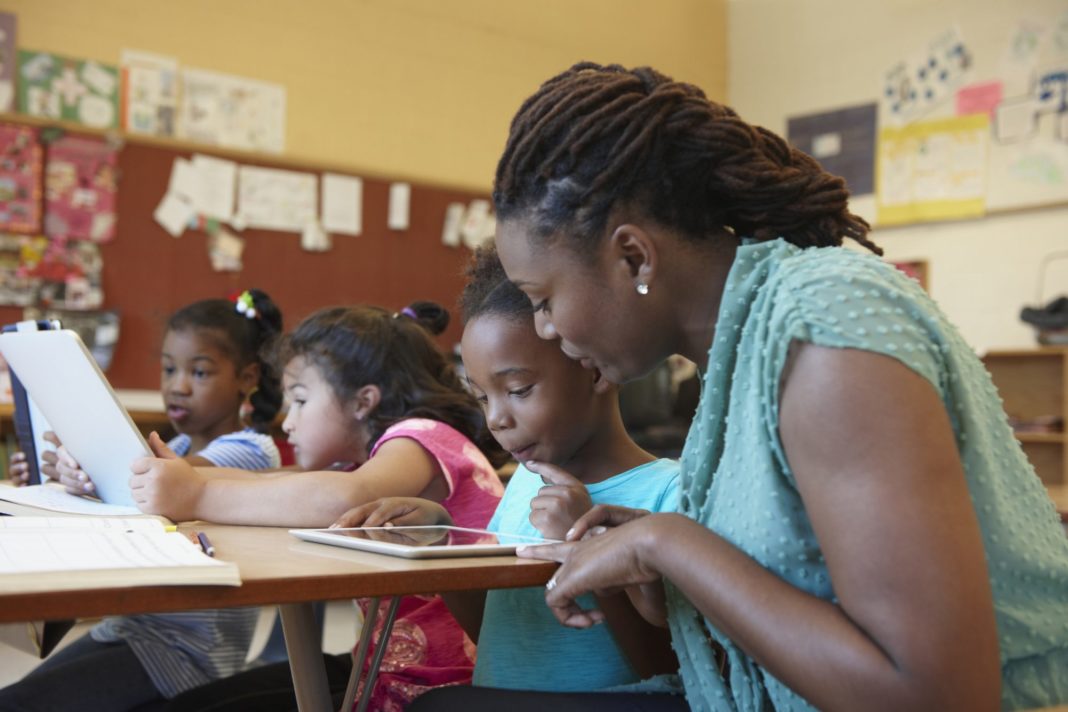Many parents couldn't have navigated the pandemic without technology. Virtual learning and remote working revealed how much we rely on it, and how grateful we are for the apps and devices that make life so much richer. Now that kids are back in school—in person or still virtually—take a lesson from top technology teachers, and figure out how to use an iPad to enhance learning rather than to simply entertain.
How to Use iPads for Learning
Technology is part of our world. Rather than preventing your child from accessing it, ensure they're using it creatively. Consider this advice from Tina Zita, a creative educator who is passionate about integrating technology and equity in the classroom through play. If parents are concerned about screen time, she suggests thinking about the value of the activities and prioritizing interactive formats over passive viewing.

"The big struggle is differentiating between consumption and creation. There's something completely different if a kid loves music and they're creating beats and their own music in GarageBand, or recording a podcast because they're passionate about Lego and they want to teach people, than just passively watching a YouTube clip," says Zita, who documents creations on her YouTube channel, and has been an Apple Distinguished Educator since 2015.
"It's exciting when families create together," Zita says. "As adults, we weren't introduced to technology that way. For us, it was a way to make life faster, not necessarily a way of doing things differently." She adds that iPads give kids the opportunity to present their unique voices. And creation tools like Keynote and Clips, among others, allow kids to try out innovative formats and advocate for themselves on how they learn best.
Chad Mowbray, an experienced principal and an Apple Distinguished Educator, says that kids of all ages can use technology in more interactive ways and explore multi-modal communication. "Kindergarten students could record a video of their shape hunt to identify 2D shapes in their home and students in grade 12 could create a digital portfolio to document their understanding of genetics," he says. iPads provide an extremely versatile platform for learning new things.
Choosing the Best iPad Apps for Kids
To get the benefits of iPads, Mowbray encourages parents to choose "rich" apps. "A rich app is one that can be used by learners across multiple subjects and multiple grades," he says. "They can create in a variety of ways by drawing, taking pictures, creating videos, recording audio, creating music or podcasts, and making animations."
With these programs, kids can combine mediums to become digital storytellers. Mowbray says that the aim should be getting students to create for a purpose—not only to consume content. Mowbray recommends the following apps:
As an example, Mowbray uses GarageBand help students make their own podcasts, and he's found it useful in creating cross-curricular links to deepen learning experiences. The possibilities are endless, and the projects produced are as unique and multifaceted as the students who created them.
"In a grade four class, we have had students create podcasts on mental health and well-being during the pandemic, another student shared knowledge of his Indigenous culture, and another entertained with a podcast about the hockey playoffs. Their final creations were meaningful to them and allowed their identity to come through," Mowbray says.
When using iPad apps, Mowbray also says that it's important to model curiosity and ask your kids lots of questions to spark their powers of reflection and innovation. Ask questions like: How did you come up with your idea? What has been the most surprising thing for you as you were creating? Did something go differently than you expected? What did you learn about yourself in this project?
Creative Learning Activities for iPads
When it comes to helping kids enhance learning at home through technology, Mowbray says parents should keep it simple. "Just play! Play around and experiment with the medium, material, or tool," he says. If you're looking for more inspiring ways to use iPads, check out these three ideas from Zita.
Get Creative with Photo Tools
Zita loves creating flat lays (a photo collection shot from a bird's-eye view) with children to explore their interests and identities. It's a simple but powerful activity that parents can also do at home. Here's how: Collect a selection of items that represent your personality or interests—Zita suggests you set a size limit by saying that everything must fit inside a plastic bag or onto a piece of paper. Have kids (and adults) arrange their items to resemble the popular "I Spy" books, then take an overhead shot of the collection with an iPad. The activity encourages creative thinking and helps kids develop their own self-identity.
Explore Nature
Bringing the iPad outdoors is one of Zita's favorite ways to use technology. She says that many people think nature and technology are at odds, but in fact, we can use technology to further appreciate our natural world. "There's nothing cooler than putting a macro lens on your iPad and handing it to a kid to see how they investigate a growing pumpkin and document the changes that they're seeing," Zita says. After all, iPads are mobile and easy for kids to hold (especially the latest iPad Mini) so there's no reason not to integrate them into outdoor pursuits.
Tell Stories Through Photographs
If you're looking for an iPad activity idea, Zita suggests families take a walk around their neighborhood or local nature area and photograph their route. Once home, kids can use photo tools like Markup or Doodle to add text, magnify points of interest, or create special scenes. In one memorable lesson, Zita had kids use filters to change the color of street scenes, making them look spooky in time for Halloween. Parents could steal this trick to create different photos scenes suitable for winter, Easter, Hanukkah, summer holidays, and many other special events.
To enhance learning further, parents can also encourage kids to create stories by dropping their photos into the app Pages, where they can add text and create their own books. "Pages has the audio tool built-in, so even if my friends aren't writers yet, we can record their voice and create an audio story piece," says Zita.
The Bottom Line
Above all, technology—including iPads—helps us to get stuff done in more efficient ways. But as we raise a digital generation, it's important to remember the full range of benefits that technology offers. "We often stress about preparing our children for the future and the future workplace, but if there's one skill that our kids are going to need, it's going to be creativity. Whether it's a way for them to reset, be innovative, think outside the box, and express themselves in their workplace," says Zita.


